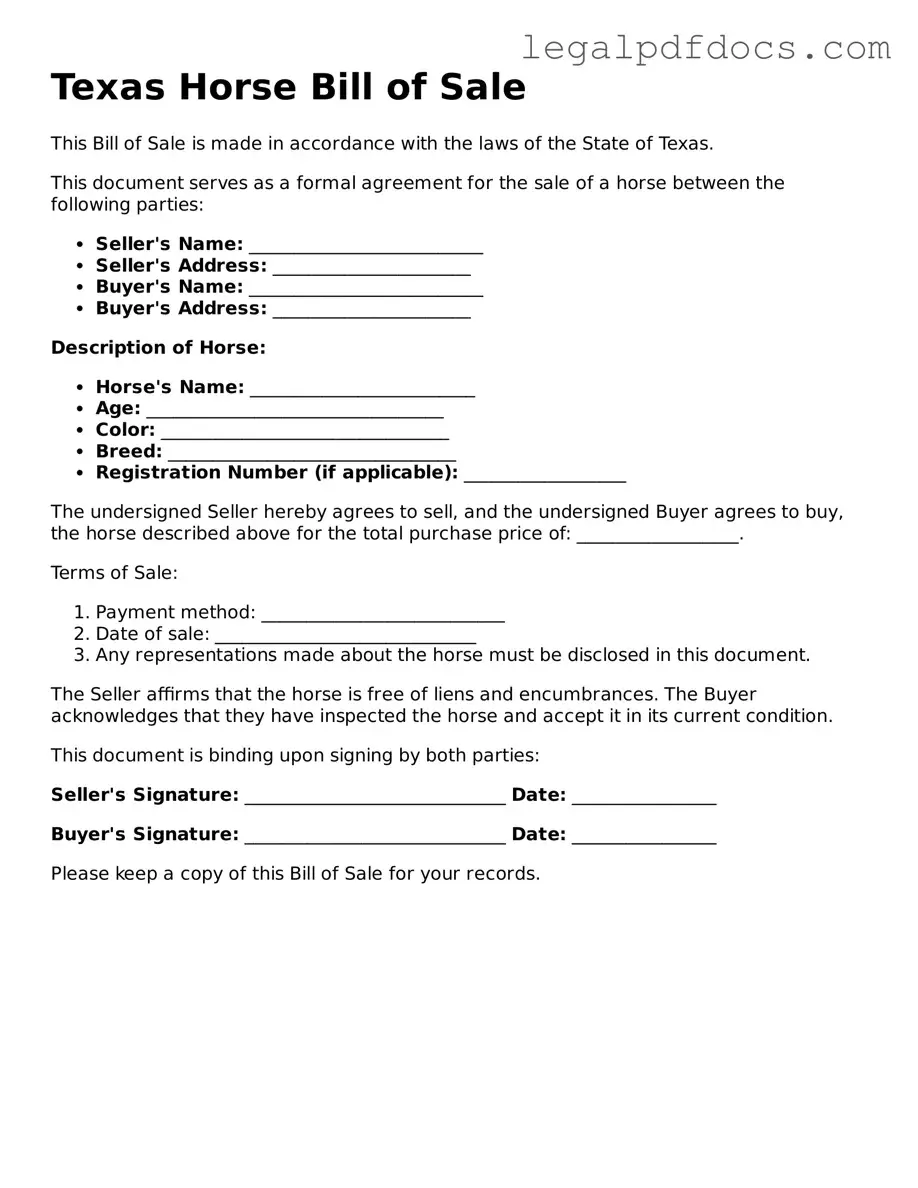Official Horse Bill of Sale Form for Texas
The Texas Horse Bill of Sale form is a legal document used to record the sale of a horse in the state of Texas. This form outlines important details about the transaction, including the buyer, seller, and horse information. To ensure a smooth sale process, it's essential to fill out this form accurately.
Ready to make your horse sale official? Fill out the form by clicking the button below.
Open Horse Bill of Sale Editor Here
